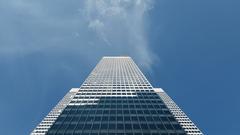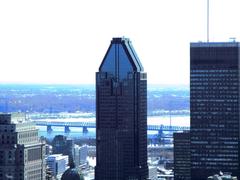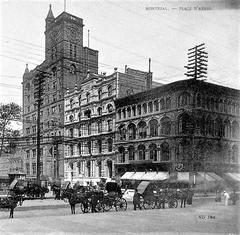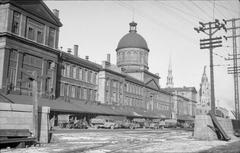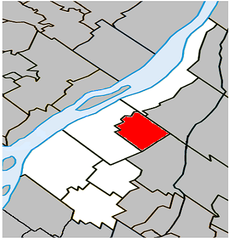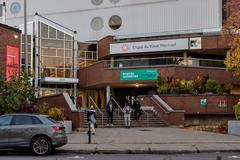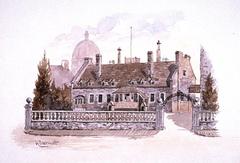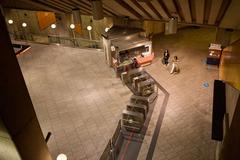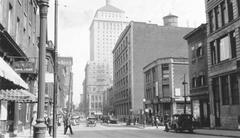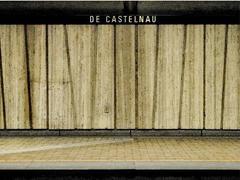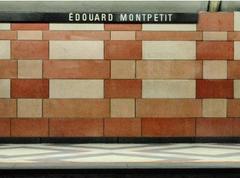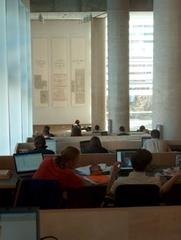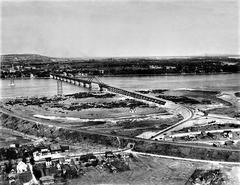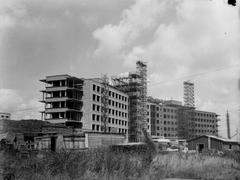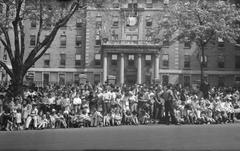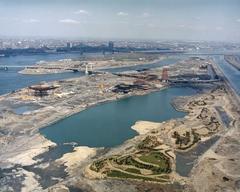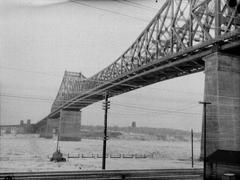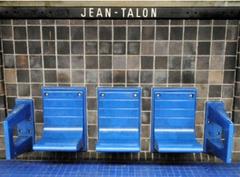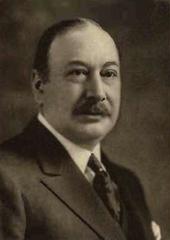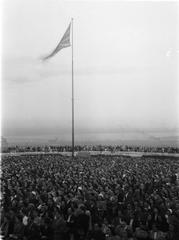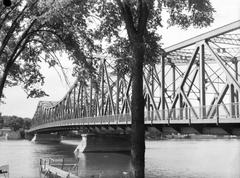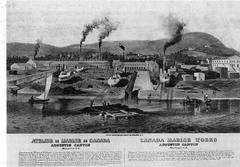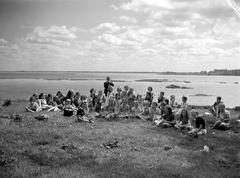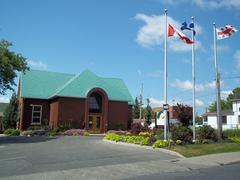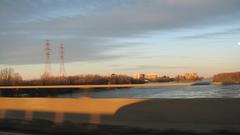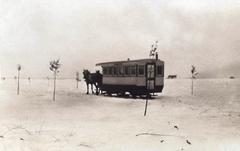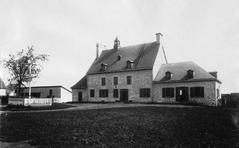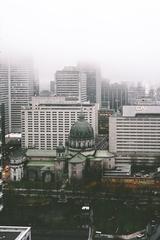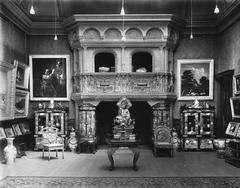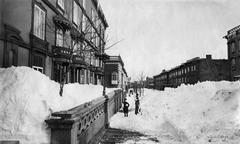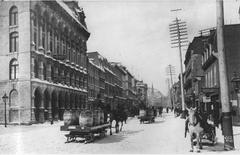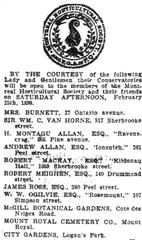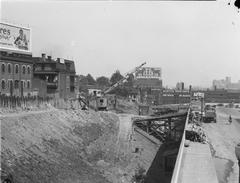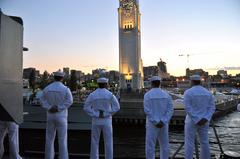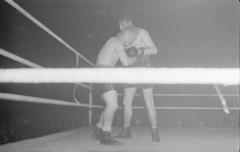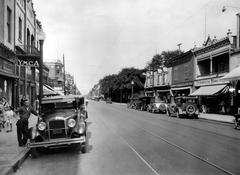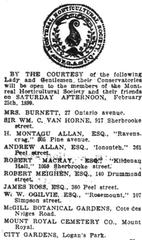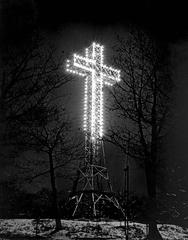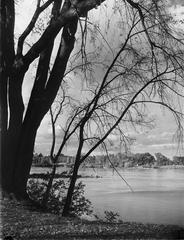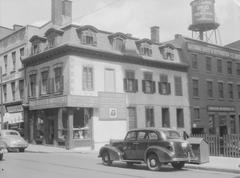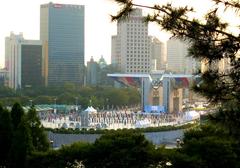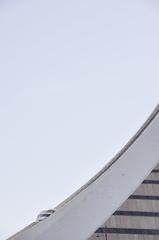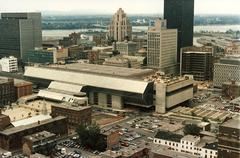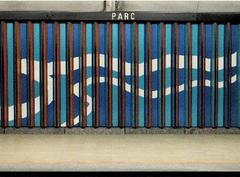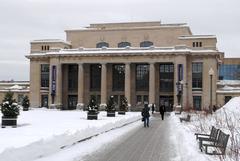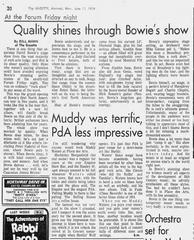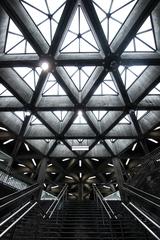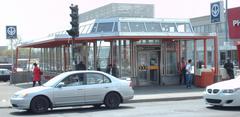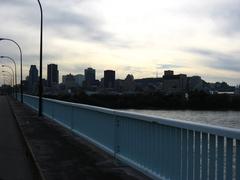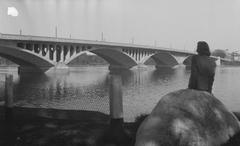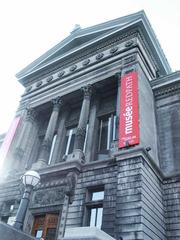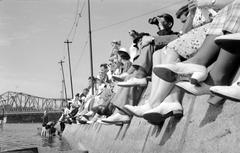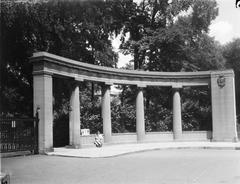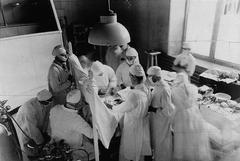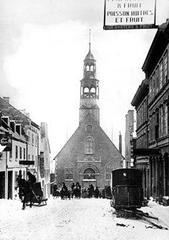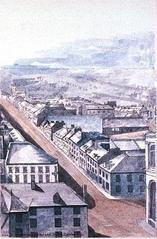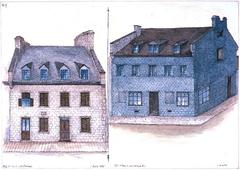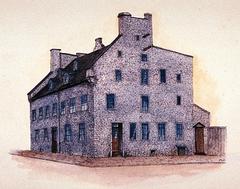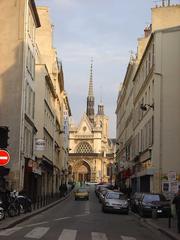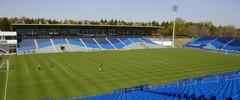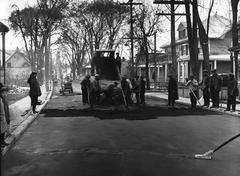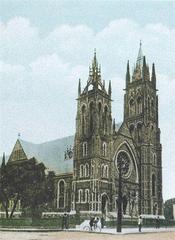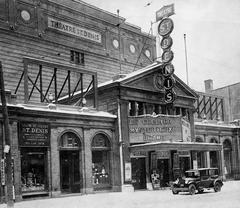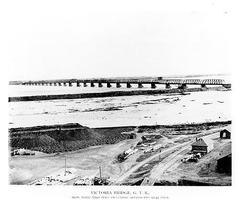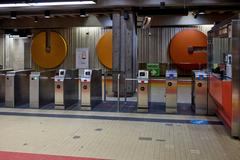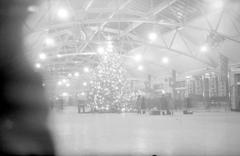Visiting Édifice Ernest-Cormier: Hours, Tickets, and Historical Insights
Publication Date: 17/08/2024
Introduction
Édifice Ernest-Cormier, located in the heart of Montreal, Canada, is a notable architectural and historical landmark named after the illustrious architect Ernest Cormier. This guide provides an in-depth look into its rich history, architectural significance, visiting details, and nearby attractions. Designed by Cormier, a prominent figure in Canadian architecture, the Édifice Ernest-Cormier stands as a testament to the Beaux-Arts style, merging classical forms with modernist simplicity. Cormier’s influence extends beyond this building, contributing significantly to projects like the Université de Montréal and the Supreme Court of Canada. Whether you’re an architecture enthusiast, a history buff, or a casual traveler, visiting Édifice Ernest-Cormier offers a unique glimpse into Montreal’s cultural and architectural heritage (The Canadian Encyclopedia, EVOQ Architecture).
Table of Contents
- Introduction
- History of Édifice Ernest-Cormier
- Visitor Information
- Nearby Attractions
- FAQ
- Conclusion
History of Édifice Ernest-Cormier
Early Beginnings and Design
Édifice Ernest-Cormier, located in Montreal, Canada, is a significant architectural landmark designed by the renowned architect and engineer Ernest Cormier. Born in Montreal on December 5, 1885, Cormier was a pivotal figure in Canadian architecture. He studied civil engineering at Montreal’s École polytechnique and later honed his architectural skills at the École des beaux-arts in Paris under Jean-Louis Pascal. His education was further enriched by the prestigious Henry Jarvis Studentship awarded by the Royal Institute of British Architects (RIBA) and the British Rome Prize, which allowed him to study ancient monuments in Rome (The Canadian Encyclopedia).
Architectural Style and Construction
The Édifice Ernest-Cormier is a testament to Cormier’s mastery of the Beaux-Arts architectural style, characterized by classical forms and elaborate details. The building’s construction began in the early 20th century, during a period when Cormier was gaining prominence for his innovative use of reinforced concrete and his ability to blend modernism with classical elements. The building features monumental granite and limestone, with an imposing portico supported by 14 Doric columns, reflecting Cormier’s adherence to classical principles while incorporating modernist simplicity (EVOQ Architecture).
Significant Projects and Contributions
Cormier’s career was marked by several significant projects that showcased his architectural prowess. One of his early collaborations was with Jean Omer Marchand, with whom he built the Dubrule office building (1919-21) and the École des beaux-arts (1922-23) in Montreal. His work on the annex to the Montreal Court House (1920-26) with L.A. Amos and C.H. Saxe marked his first large-scale public building project. In 1925, he became the architect of the Université de Montréal, where he planned the overall design of the new campus and erected the main building, recognized as the first modern building in Québec (The Canadian Encyclopedia).
The Supreme Court of Canada and International Recognition
In 1938, at the end of the Great Depression, Cormier was entrusted with the design of the new Supreme Court of Canada in Ottawa. This building, with its simple classicism, illustrated his understanding of modernism and his ability to create timeless architectural works. His international recognition was further solidified when he joined the team assembled to build the Headquarters of the United Nations in New York in 1947, where he designed the exterior doors (The Canadian Encyclopedia).
The Ernest Cormier House
One of Cormier’s most personal and celebrated projects is the house he built for himself in the Golden Square Mile, an elegant Montreal neighborhood. Constructed between 1930 and 1931, this Art Deco masterpiece is distinguished by its opulent interior design and unique architectural elements. The house was designated a National Historic Site of Canada in 2017, recognized for its architectural significance and its association with former Prime Minister Pierre Elliot Trudeau, who made it his personal residence from 1984 to 2000 (Parks Canada).
Restoration and Preservation
The Édifice Ernest-Cormier has undergone several restoration and rehabilitation projects to preserve its historical and architectural integrity. In 2017, EVOQ Architecture was mandated to restore and rehabilitate the building’s masonry envelope, replace the interior aluminum windows, and restore the exterior steel windows. This minimal intervention approach aimed to maintain the building’s monumental appearance while improving its structural stability (EVOQ Architecture).
Visitor Information
Visiting Hours and Tickets
The Édifice Ernest-Cormier is open to visitors Monday through Friday from 9 AM to 5 PM. Admission is free, but guided tours might require prior booking and may have associated fees. Check the official website or contact the administration for the latest information on visiting hours and ticket prices.
Location and Accessibility
The building is located at 100 Notre-Dame Street East, Montreal, QC H2Y 4B6, Canada. It is easily accessible by public transportation, with several bus and metro lines serving the area. The building is wheelchair accessible, ensuring that all visitors can enjoy its architectural splendor.
Nearby Attractions
While visiting Édifice Ernest-Cormier, consider exploring other nearby historical sites and attractions in Montreal, such as:
- Old Montreal: Wander through cobblestone streets and visit historical landmarks like the Notre-Dame Basilica.
- Montreal Museum of Fine Arts: Discover a vast collection of art from different periods and regions.
- Mount Royal Park: Enjoy panoramic views of the city and a range of outdoor activities.
FAQ
Is the Édifice Ernest-Cormier open on weekends?
No, the Édifice Ernest-Cormier is currently open only on weekdays from 9 AM to 5 PM.
Are there guided tours available?
Yes, guided tours are available. It is recommended to book in advance through the official website or contact the administration for more details.
Is the building accessible for people with disabilities?
Yes, the Édifice Ernest-Cormier is wheelchair accessible and equipped to accommodate visitors with disabilities.
Conclusion
The Édifice Ernest-Cormier stands as a monument to the architectural genius of Ernest Cormier. Its historical significance, architectural beauty, and continued use as a judicial building make it a must-visit landmark in Montreal. The building’s preservation efforts ensure that future generations can appreciate its grandeur and the legacy of one of Canada’s most influential architects.
For more information on visiting hours, tickets, and other details, be sure to visit the official website or contact the administration. Don’t forget to explore nearby attractions to make the most of your visit to Montreal. Follow us on social media for more updates and travel tips.
Summary and Call to Action
The Édifice Ernest-Cormier is more than just a building; it is a symbol of architectural brilliance and historical significance. From its Beaux-Arts design to its role in Canada’s judicial history, the building offers a rich tapestry of stories and architectural marvels. Visiting this landmark not only provides insight into the genius of Ernest Cormier but also allows visitors to immerse themselves in Montreal’s vibrant history and culture. With its convenient location, free admission, and accessibility features, Édifice Ernest-Cormier is a must-visit for anyone exploring Montreal. Be sure to also explore nearby attractions like Old Montreal and the Montreal Museum of Fine Arts to make the most of your visit (The Canadian Encyclopedia, EVOQ Architecture, Parks Canada, Wikipedia).
